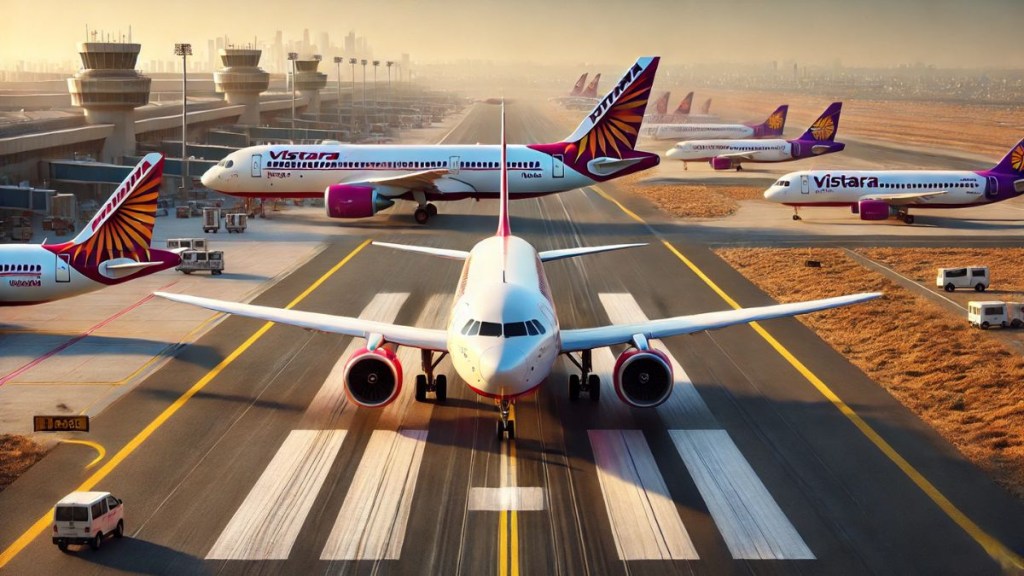Tata Group’s Air India completed its highly anticipated merger with Vistara on November 12, forming a single integrated airline in collaboration with Singapore Airlines. This new entity will serve over 1,20,000 passengers daily, connecting more than 90 destinations worldwide. This consolidation is a significant step in reshaping India’s aviation landscape.
This merger, first announced in November 2022, follows closely on the heels of Air India Express and AIX Connect’s integration six weeks prior. The dual mergers establish the Tata Group’s vision of a full-service and a low-cost carrier of scale, aiming to create a “world-class global aviation company with an Indian heart.”
Air India-Vistara merger forms India’s largest international carrier
Vistara, the nearly decade-old joint venture between Tata and Singapore Airlines, took its final flight from Delhi to Singapore on Tuesday. The merger has officially created India’s largest international airline and the second-largest domestic carrier.
Singapore Airlines is set to invest an additional Rs 3,194.5 crore into the expanded Air India entity, which now operates over 5,600 weekly flights to 90+ destinations with a fleet of 210 aircraft. The expanded network also provides connectivity to over 800 destinations through more than 75 codeshare and interline agreements.
“Post-merger, Air India Group operates a combined fleet of 300 aircraft covering 55 domestic and 48 international destinations, with 312 routes and 8,300 weekly flights. The collective staff strength stands at over 30,000,” said Air India in its official statement on Tuesday.
Singapore Airlines confirmed the merger, noting that Air India will now operate as its associated company, with the additional funding drawn from SIA Group’s internal resources.
Changes for passengers post-merger
Vistara’s former flight code ‘UK’ has been replaced by the Air India prefix ‘AI2’ for all flights. While Vistara was known for its premium service quality, Air India is undergoing a transformation to address service challenges and elevate its offerings. According to Campbell Wilson, Managing Director and CEO of Air India, the merger “completes the consolidation and restructuring phase” post-privatization and marks a “significant milestone.”
“The merger of Air India and Vistara completes the consolidation and restructuring phase of the Air India Group’s post-privatization journey and is a significant milestone. Over the past two years, teams across the four airlines have worked closely together and with other stakeholders to ensure that the transition of people, assets, operations and, most importantly, customers, was as seamless as possible,” said Campbell Wilson, Managing Director and Chief Executive Officer, Air India.
Maharaja icon lives on in new Air India
The renowned ‘Maharaja’ icon associated with Air India will continue as a symbol of the new entity, with Club Vistara’s 4.5 million frequent flyer accounts now transferred to the ‘Maharaja Club.’ Air India also shared that over 4,000 vendor contracts have been streamlined, and nearly 2,70,000 customer bookings successfully migrated.
Vistara’s last flight under code ‘UK’ flew from Delhi to Singapore, while the final domestic flight was from Mumbai to Delhi. The merged entity’s inaugural flights under the new code included AI2286 from Doha to Mumbai and AI2984 from Mumbai to Delhi, both landing early Tuesday.
A Historic Milestone in Indian Aviation
This merger represents the largest consolidation in Indian aviation since 2006-07, when Indian Airlines merged with Air India, Air Sahara joined Jet Airways, and Air Deccan was incorporated into Kingfisher Airlines. Together, Air India, Vistara, and AIX Connect currently hold a 29% domestic market share as of September, according to official data.
The Tata Group’s long-standing connection to Indian aviation dates back to 1932 when J.R.D. Tata founded Tata Airlines. This legacy airline was later nationalized as Air India in 1953, marking the beginning of a rich aviation history that has now entered a transformative new phase.

